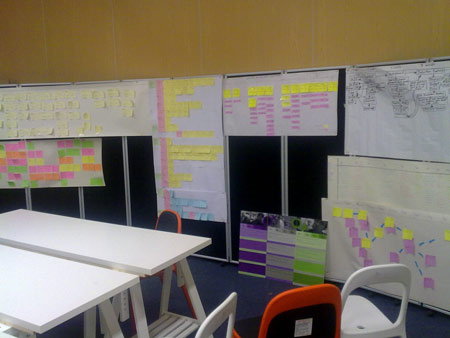Plan to Succeed!
About planning PERT and GANTT and TUFTE
First set the overall goal: For example: Get a distinction in MDes!
Then make a list. Start of casually enough. Simply think of the end of the project (September) and write down the things you will have done by then.
Handed in all work
Got everything finished
Published a book
Posters look great
Essay/Report very good
Write down 10 items. Number the 10 items, going up in 10s. Like this:
10. Hand in all work
20. finish everything
30. Publish a book
40. Make great posters
50. Write Essay/Report
60. etc.
70
80
90
100.
Special note: This is not a “to do list”, it’s a “done list”! Re-word/re-work each item on the list so that it reads like an achievement, something that has been done.
10. All work for MDes Handed in on time
20. ebook published on amazon fire app store in mid August
30. 500 copies of book downloaded
40. Large format posters look great in the exhibition
50. Kindle Fire in the show attracts a lot of attention
60. etc.
70
80
90
100.
Keep it upbeat – this is where you are setting your AMBITION. Look at each task and quickly write out subtasks that belong to it. What do you need to do in order to achieve the goal. Because you have written the top list in 10s you can number the subtasks 11, 12, 13, 14, etc, 21,22,23, etc. Write up to 10 subtasks for each main task. When you have your rough list done go back over it and write it again , but this time as achieved items. Now for the Sub-subtasks. You can number these using a point system, for example 11.1, 11.2, 11.3. Again write the tasks out not as things to do (like a normal list), write them as items that have been done.
Acuuracy and granularity. You should be able to estimate how long the sub sub tasks will take, each one should be small enough. If you can’t, then you may need sub sub sub tasks, ekk! When you plan your MDes project try to plan it with a day by day level of accuracy!
How long is an MDes? How much work? The MDes is a course that is one calendar year long. We tend to work on project planning in December – three months in. From December to September (the end of the course is ten months) If you take two weeks at Christmas and four weeks holidays in the Summer then there are 30 weeks left from 1st of December to the start of September. Working 5 days per week that is 150 days. Working 5 days per week that is 60 days.
If your added up days comes to anything between 60 and 150 then that is probably about the right amount of project tasks for an MDes project. If your days effort sum comes to less than 60 or more than 150 then you will know you have some sort of planning issue that you need to deal with. It’s a rough guide!
When you have a list done write the task descriptions on Yellow stickers. (Like this).

Put the Yellow stickers on a large board in rough chronological order. Are any tasks dependant on other tasks being done before they can get started? Can any tasks be done at the same time as some other tasks? This is a bit like making a PERT chart.
Re –order the tasks until you are happy with the Chronology.
How long should this task (the task of planning) take? Lets say it works out at a 100 day project. I think about 10 percent of the overall effort should be spent on planning. There will be about half of that planning task at the beginning of the project with the other half running throughout the project.



